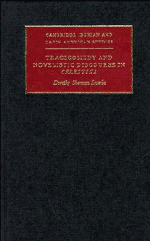Book contents
- Frontmatter
- Contents
- List of illustrations
- Preface
- Abbreviations
- 1 Introduction: Celestina and novelistic discourse
- 2 The prefatory material: the author's ambivalent intentions
- 3 Genre and the parody of courtly love
- 4 From parody to satire: clerical and estates satire
- 5 Verbal humour and the legacy of stagecraft
- 6 The rhetorical shift from comedy to tragedy: ironic foreshadowing and premonitions of death
- 7 Is Melibea a tragic figure?
- 8 Pleberio's lament, Cárcel de Amor, and the Corbacho
- 9 Conclusion: Rojas' ambivalence towards literature
- Notes
- Bibliography
- Index
- CAMBRIDGE IBERIAN AND LATIN AMERICAN STUDIES
2 - The prefatory material: the author's ambivalent intentions
Published online by Cambridge University Press: 05 March 2012
- Frontmatter
- Contents
- List of illustrations
- Preface
- Abbreviations
- 1 Introduction: Celestina and novelistic discourse
- 2 The prefatory material: the author's ambivalent intentions
- 3 Genre and the parody of courtly love
- 4 From parody to satire: clerical and estates satire
- 5 Verbal humour and the legacy of stagecraft
- 6 The rhetorical shift from comedy to tragedy: ironic foreshadowing and premonitions of death
- 7 Is Melibea a tragic figure?
- 8 Pleberio's lament, Cárcel de Amor, and the Corbacho
- 9 Conclusion: Rojas' ambivalence towards literature
- Notes
- Bibliography
- Index
- CAMBRIDGE IBERIAN AND LATIN AMERICAN STUDIES
Summary
The comic aspect of Celestina has been given short shrift in twentieth-century criticism. Its ironies have been studied, but principally its tragic ironies and not its comic ones. The relation of the work to its classical and Italian humorous antecedents has also been scrutinized, but mainly from the perspective of literary sources. Only parody has been studied from the humorous angle. Yet Rojas himself tells us that he began his work by finding a funny book. He decided to continue it in the same vein, although his own tragic ending altered the character of the work enough to force him to change the title into a hybrid form so that the Comedia de Calisto y Melibea became the Tragicomedia in its expanded version:
Otros han litigado sobre el nombre, diciendo que no se había de llamar comedia, pues acababa en tristeza, sino que se llamase tragedia. El primer autor quiso darle denominatión del principio, que fue placer, y llamóla comedia. Yo viendo estas discordias, entre estos extremos partí agora por medio la porfia, y llaméla tragicomedia.
(43)[Others have contended about the name, saying that it ought not to be called a comedy, because it ends in sorrow and mourning, but rather termed it a tragedy. The author himself would have it take its denomination from its beginning, which treats of pleasure, and therefore called it a comedy. […]
- Type
- Chapter
- Information
- Tragicomedy and Novelistic Discourse in Celestina , pp. 7 - 22Publisher: Cambridge University PressPrint publication year: 1989

